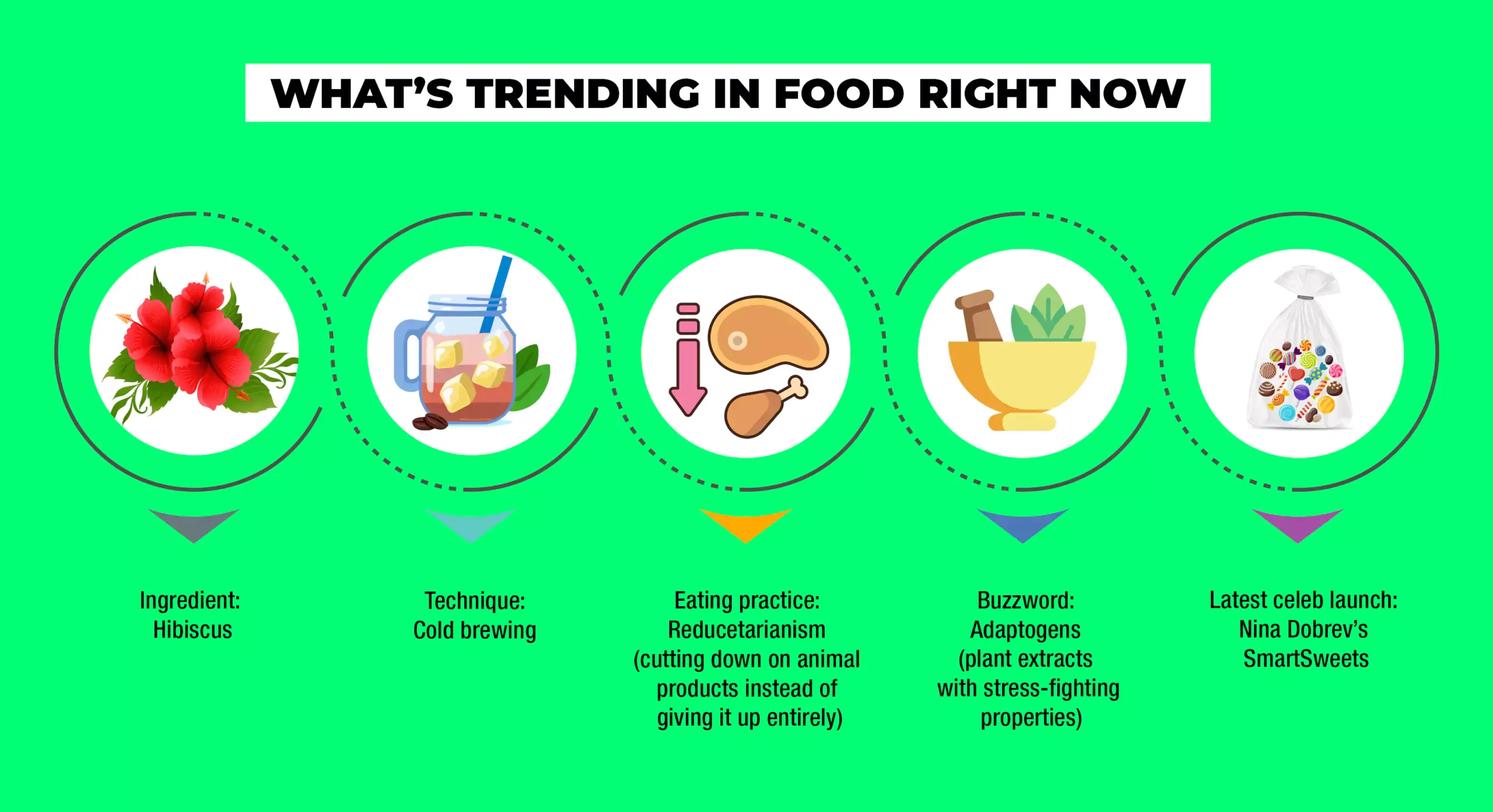With the unwanted guest that barged in with the year 2020, the entire world came to a sudden halt. As a result, we were all stuck in our homes, trying to find ways to pass the time. Different people utilised the lockdown differently. While health enthusiasts started promoting indoor workouts, artists started creating resourceful art out of household materials. However, there was one thing that almost everyone tried experimenting with—food trends. Remember dalgona coffee, salmon rice, fruit cereal (and whatnot!) that became popular during this time?
Social media platforms like Instagram and TikTok only help in popularising food trends. But what factors govern these trends? What makes some food trendy and some discarded like yesterday’s news?
Promoting food trends as ‘the next big thing’
The promotional approach and attention that a food gets, says a lot about how deep its impact has been and how long it will dominate the market. Guerrilla marketing is one such ad strategy that promotes an unconventional idea as the “next big thing”. This tactic is usually different from the traditional one as it relies on personal interaction, has a smaller budget, and focuses on smaller groups of promoters that are responsible for getting the word out. It has been popularised by the growth of connective technology that amplifies messaging.
For instance, American supermarkets in 2014 used this method to hype the vegetable kale, which was not very well known or well received until then. Entrepreneur Oberon Sinclair used guerilla marketing strategies to highlight the health benefits of the vegetable across popular restaurants. Within no time, the kale storm took over health-conscious vegans and vegetarians, along with celebrities and influencers. Publications like Bon Appetit magazine, and celebs like Gwyneth Paltrow and Ellen Degeneres only amplified this promotion.
The role of celebs and influencers
You must’ve watched the celeb-featured series of “What I Eat in a Day” videos on YouTube or TikTok with sophisticated food products that are neither easily accessible nor quite affordable. Not to forget their constant emphasis on the health benefits of products like goji berries, acai berries, yuzus, or moringa to name a few. Interestingly, the people who might already be familiar with these items might get baffled upon hearing these sophisticated names. Their diets are usually seen to be ‘gluten free’ and ‘dairy free’ and these trends greatly influence the followers. Apart from vegans and vegetarians, terms like ovo-vegetarian, lacto-vegetarian, pescatarian, and flexitarian have also started to circulate in the market. One can even find plant-based substitutes for meat products!

The ‘wokeness’ of food trends
In a more recent trend, one can see various types of milk that are available in the market. Nut juice and cornstarch are now labelled as a type of milk. But that is not all. Apparently “potato milk” is the next big milk, which is gaining popularity among people who follow food trends. The trends only keep evolving, competing with what was trendy yesterday.
Sugar, in all forms, is a food product that goes under serious scrutiny every now and then. Alternative sweeteners, as a result, have flooded the market. Ironically, studies show how these substitute sweeteners can do more harm than good as they have been found linked to obesity, diabetes, and depression.
Like the fashion industry, even the food industry is hugely biased to the western culture. Food appropriation, where a culture is not given its due representation has become hugely prevalent. Foods that need to become a trend have to appeal to the western tastebuds. Thus, authentic dishes and cuisines have been constantly modified and changed, so much so that its roots are almost untraceable now!
Food trends that are here to stay
As fleeting and temporary some of these trends might be, no matter how popular they were at some point of time, there are some trends that outlive people’s expectations. Let us look at some of them:
Seasonal fruit
Seasonal fruits are nature’s way of providing nutrients and nourishment that one needs to sustain. They are quite affordable, easily available, and environment-friendly as they encourage sustainable farming practices.
Home-grown food:
Home-grown food is the best kind of food because you are aware of what goes into your body. Moreover, you have grown it with utmost care and love. Besides, gardening can be a very rewarding hobby. You can grow herbs and other garden-variety plants for self-use.
Fusion food:
It’s okay to have fun experimenting and crisscrossing cuisines for a different experience as long as they don’t interfere with the taste, health benefits and their roots. After all, who wouldn’t want some Indo-Chinese or Tex-Mexican food?
In this article, we have talked about food trends that flood the market and marketing tactics that help them sustain. Now, we’d love to hear from you about any food trend that particularly piqued your interest. Or how about a trend that you wholeheartedly detest?

